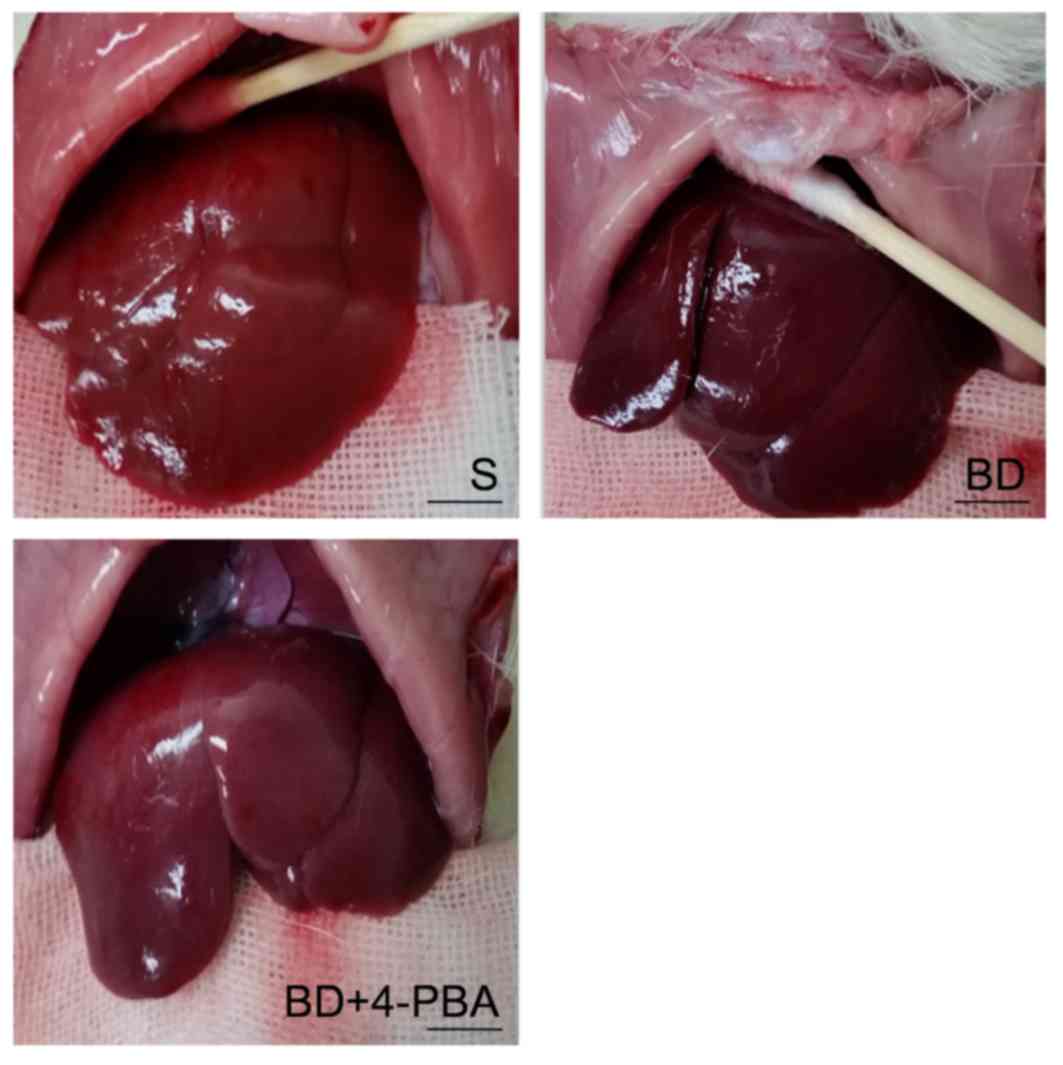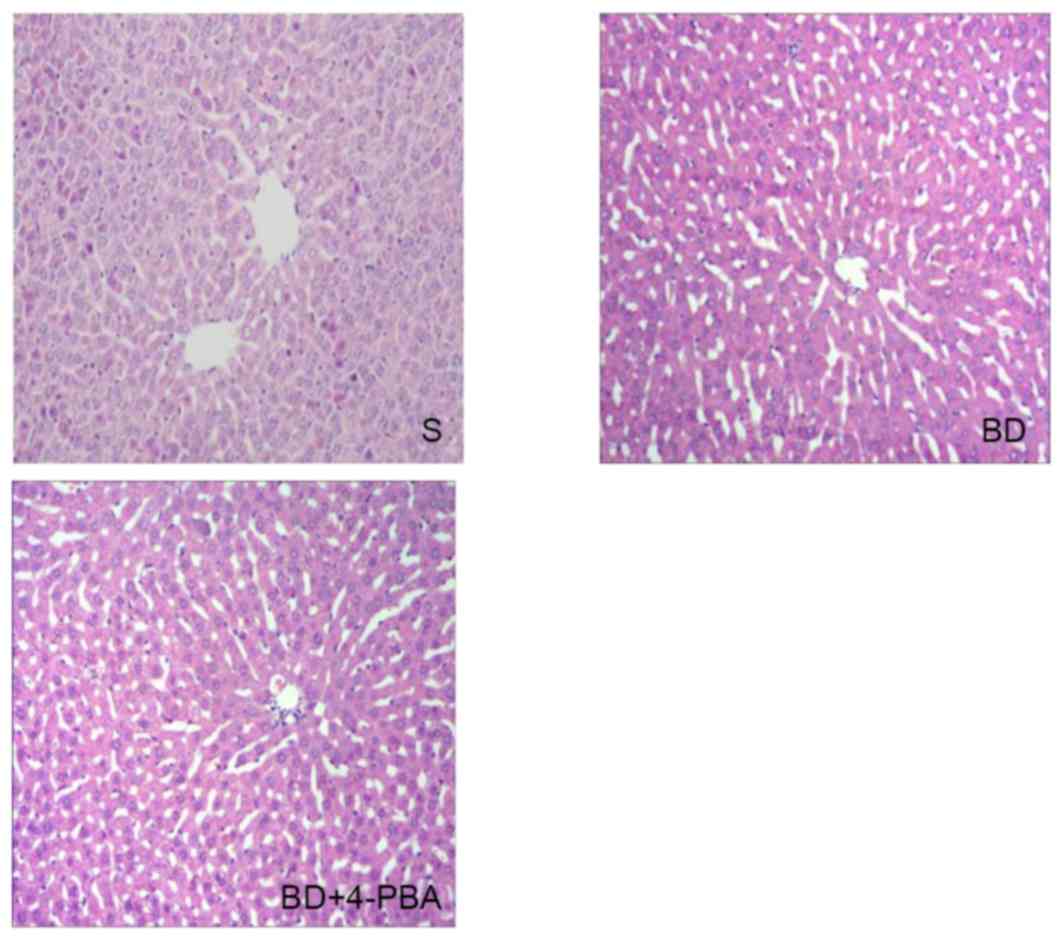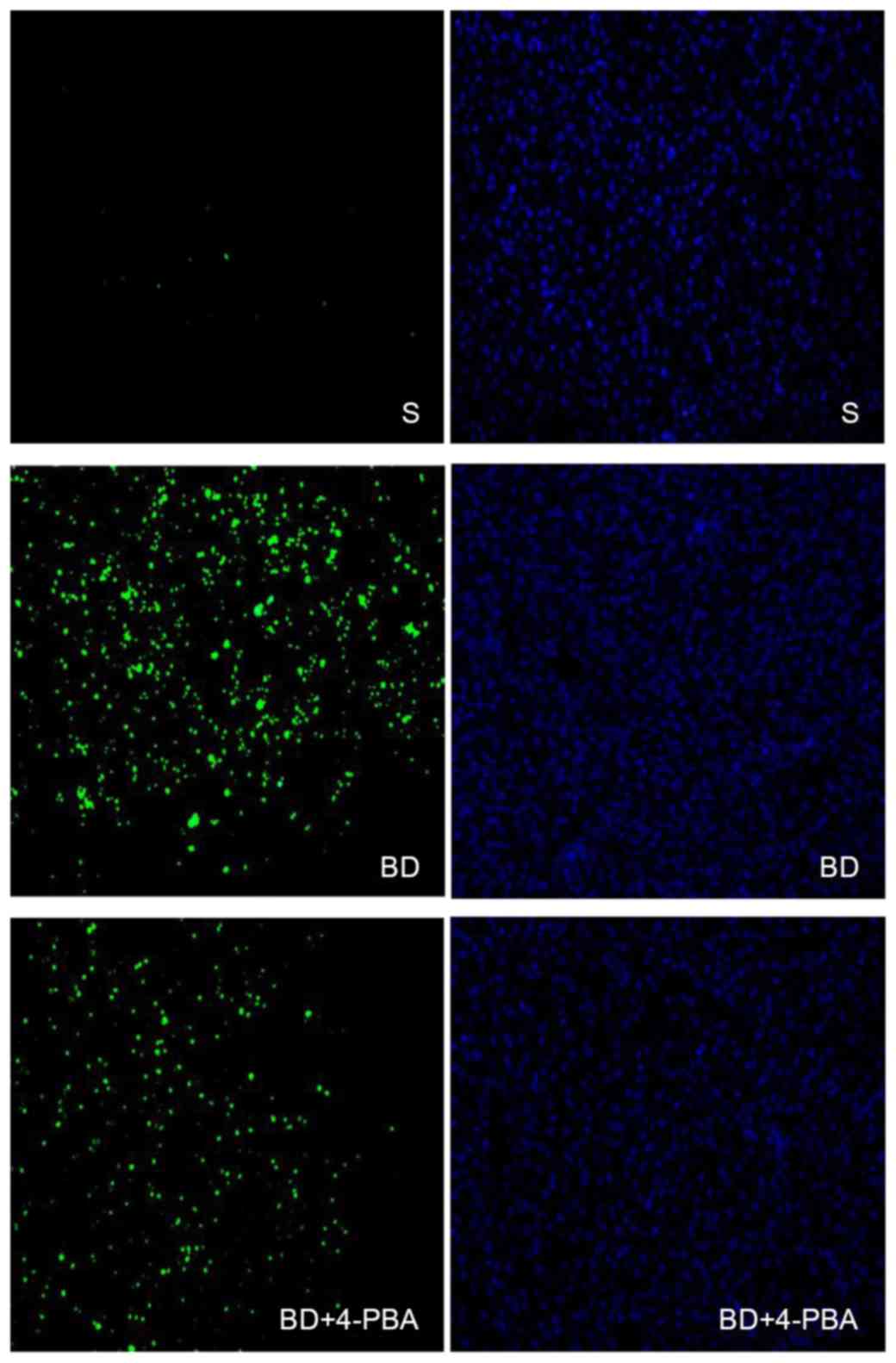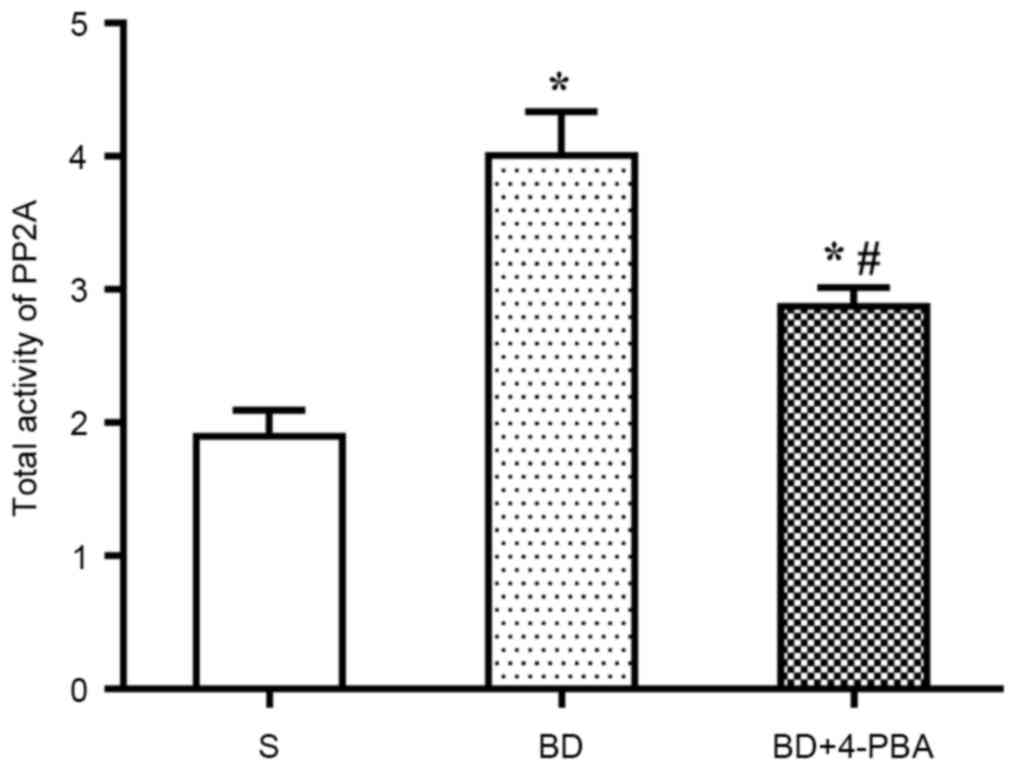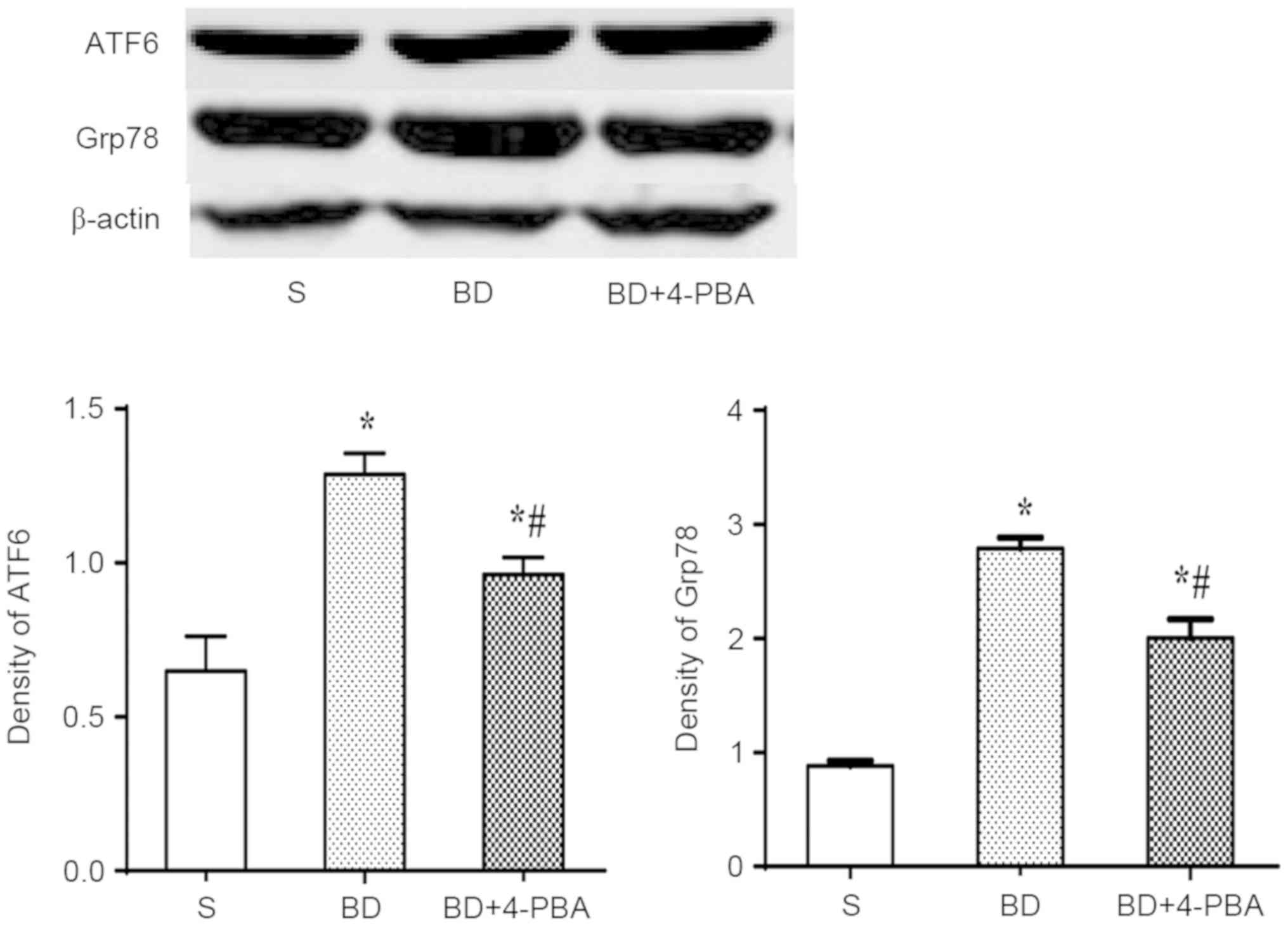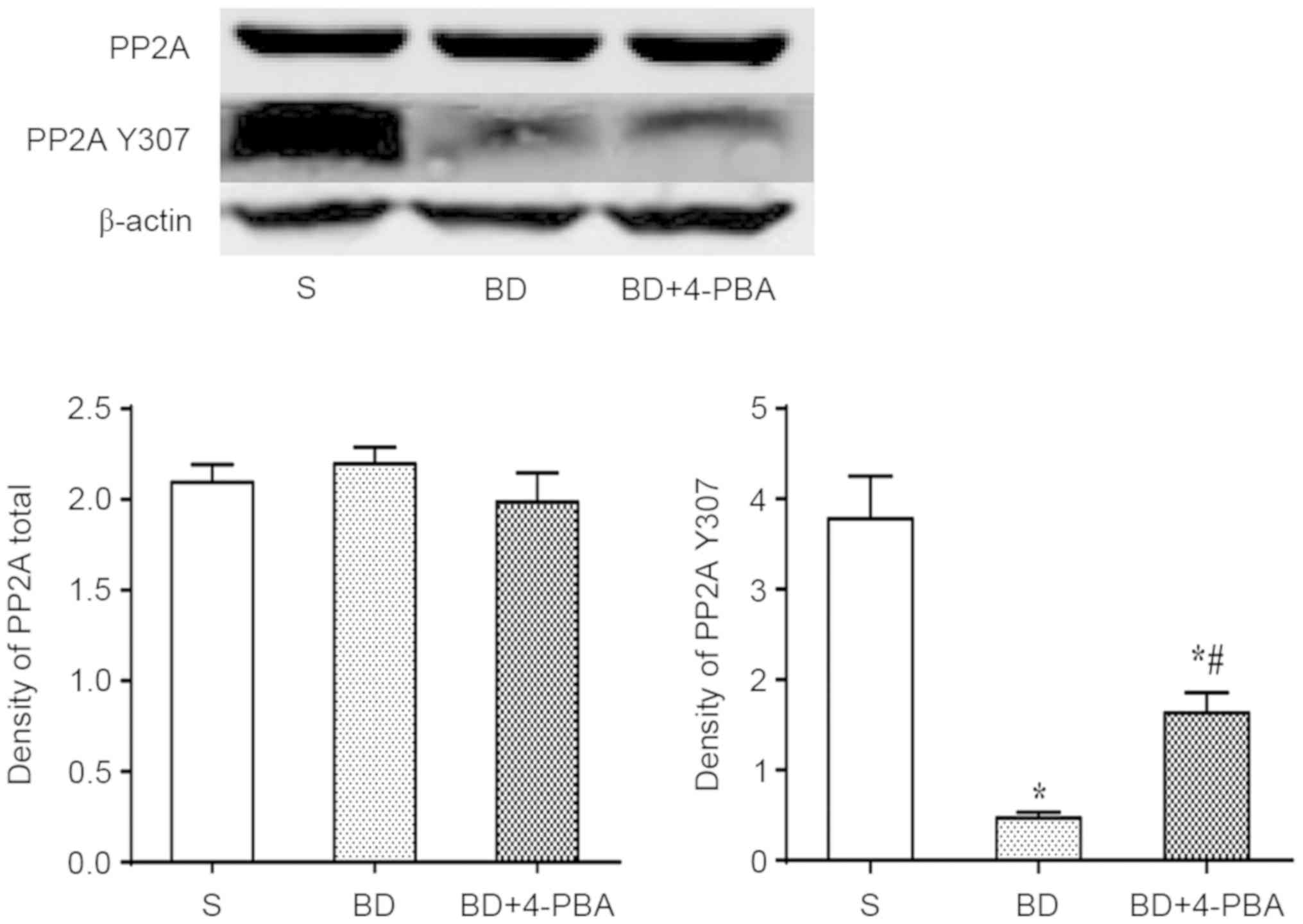|
1
|
Wertheim JA, Petrowsky H, Saab S,
Kupiec-Weglinski JW and Busuttil RW: Major challenges limiting
liver transplantation in the United States. Am J Transplant.
11:1773–1184. 2011. View Article : Google Scholar : PubMed/NCBI
|
|
2
|
Adam R, Karam V, Cailliez V, O Grady JG,
Mirza D, Cherqui D, Klempnauer J, Salizzoni M, Pratschke J,
Jamieson N, et al: 2018 annual report of the European Liver
Transplant Registry (ELTR)-50-year evolution of liver
transplantation. Transpl Int. 31:1293–1317. 2018. View Article : Google Scholar : PubMed/NCBI
|
|
3
|
Belzberg H, Shoemaker WC, Wo CC, Nicholls
TP, Dang AB, Zelman V, Gruen JP, Berne TV and Demetriades D:
Hemodynamic and oxygen transport patterns after head trauma and
brain death: Implications for management of the organ donor. J
Trauma. 63:1032–1042. 2007. View Article : Google Scholar : PubMed/NCBI
|
|
4
|
Carlessi R, Lemos NE, Dias AL, Oliveira
FS, Brondani LA, Canani LH, Bauer AC, Leitão CB and Crispim D:
Exendin-4 protects rat islets against loss of viability and
function induced by brain death. Mol Cell Endocrinol. 412:239–250.
2015. View Article : Google Scholar : PubMed/NCBI
|
|
5
|
Cao S, Wang T, Yan B, Lu Y, Zhao Y and
Zhang S: Brain death is associated with endoplasmic reticulum
stress and apoptosis in rat liver. Transplant Proc. 46:3297–3302.
2014. View Article : Google Scholar : PubMed/NCBI
|
|
6
|
Salvador-Gallego R, Hoyer MJ and Voeltz
GK: SnapShot: Functions of endoplasmic reticulum membrane contact
sites. Cell. 171:1224.e12017. View Article : Google Scholar
|
|
7
|
Wang S and Kaufman RJ: The impact of the
unfolded protein response on human disease. J Cell Biol.
197:857–867. 2012. View Article : Google Scholar : PubMed/NCBI
|
|
8
|
Tabas I and Ron D: Integrating the
mechanisms of apoptosis induced by endoplasmic reticulum stress.
Nat Cell Biol. 13:184–190. 2011. View Article : Google Scholar : PubMed/NCBI
|
|
9
|
Janssens V and Goris J: Protein
phosphatase 2A: A highly regulated family of serine/threonine
phosphatases implicated in cell growth and signalling. Biochem J.
353:417–439. 2001. View Article : Google Scholar : PubMed/NCBI
|
|
10
|
Guichard C, Pedruzzi E, Fay M, Marie JC,
Braut-Boucher F, Daniel F, Grodet A, Gougerot-Pocidalo MA, Chastre
E, Kotelevets L, et al: Dihydroxyphenylethanol induces apoptosis by
activating serine/threonine protein phosphatase PP2A and promotes
the endoplasmic reticulum stress response in human colon carcinoma
cells. Carcinogenesis. 27:1812–1827. 2006. View Article : Google Scholar : PubMed/NCBI
|
|
11
|
Christen V, Treves S, Duong FH and Heim
MH: Activation of endoplasmic reticulum stress response by
hepatitis viruses up-regulates protein phosphatase 2A. Hepatology.
46:558–565. 2007. View Article : Google Scholar : PubMed/NCBI
|
|
12
|
Qiu Y, Mao T, Zhang Y, Shao M, You J, Ding
Q, Chen Y, Wu D, Xie D, Lin X, et al: A crucial role for RACK1 in
the regulation of glucose-stimulated IRE1alpha activation in
pancreatic beta-cells. Sci Signal. 3:ra72010. View Article : Google Scholar : PubMed/NCBI
|
|
13
|
National Research Council: Guide for the
care and use of laboratory animals. 8th. The National Academies
press; Washington, DC: 2011
|
|
14
|
Pratschke J, Wilhelm MJ, Kusaka M,
Laskowski I and Tilney NL: A model of gradual onset brain death for
transplant-associated studies in rats. Transplantation. 69:427–430.
2000. View Article : Google Scholar : PubMed/NCBI
|
|
15
|
Wijdicks EF: Brain death guidelines
explained. Semin Neurol. 35:105–115. 2015. View Article : Google Scholar : PubMed/NCBI
|
|
16
|
Van Der Hoeven JA, Moshage H, Schuurs T,
Nijboer M, Van Schilfgaarde R and Ploeg RJ: Brain death induces
apoptosis in donor liver of the rat. Transplantation. 76:1150–1154.
2003. View Article : Google Scholar : PubMed/NCBI
|
|
17
|
Cao S, Yan B, Lu Y, Zhang G, Li J, Guo W,
Zhao Y and Zhang S: C/EBP homologous protein-mediated endoplasmic
reticulum stress-related renal apoptosis is involved in rats with
brain death. Transplant Proc. 47:354–358. 2015. View Article : Google Scholar : PubMed/NCBI
|
|
18
|
Rose MD, Misra LM and Vogel JP: KAR2, a
karyogamy gene, is the yeast homolog of the mammalian BiP/GRP78
gene. Cell. 57:1211–1221. 1989. View Article : Google Scholar : PubMed/NCBI
|
|
19
|
Gifford JB, Huang W, Zeleniak AE, Hindoyan
A, Wu H, Donahue TR and Hill R: Expression of GRP78, master
regulator of the unfolded protein response, increases
chemoresistance in pancreatic ductal adenocarcinoma. Mol Cancer
Ther. 15:1043–1052. 2016. View Article : Google Scholar : PubMed/NCBI
|
|
20
|
Yoshida H, Matsui T, Hosokawa N, Kaufman
RJ, Nagata K and Mori K: A time-dependent phase shift in the
mammalian unfolded protein response. Dev Cell. 4:265–271. 2003.
View Article : Google Scholar : PubMed/NCBI
|
|
21
|
Lee AS: The ER chaperone and signaling
regulator GRP78/BiP as a monitor of endoplasmic reticulum stress.
Methods. 35:373–381. 2005. View Article : Google Scholar : PubMed/NCBI
|
|
22
|
Xie J, Tao ZH, Zhao J, Li T, Wu ZH, Zhang
JF, Zhang J and Hu XC: Glucose regulated protein 78 (GRP78)
inhibits apoptosis and attentinutes chemosensitivity of gemcitabine
in breast cancer cell via AKT/mitochondrial apoptotic pathway.
Biochem Biophys Res Commun. 474:612–619. 2016. View Article : Google Scholar : PubMed/NCBI
|
|
23
|
Kaira K, Toyoda M, Shimizu A, Imai H,
Sakakura K, Nikkuni O, Suzuki M, Iijima M, Asao T and Chikamatsu K:
Prognostic significance of GRP78/BiP expression in patients with
Stage III/IV hypopharyngeal squamous cell carcinoma. Neoplasma.
63:477–783. 2016. View Article : Google Scholar : PubMed/NCBI
|
|
24
|
Ron D and Walter P: Signal integration in
the endoplasmic reticulum unfolded protein response. NatRev Mol
Cell Biol. 8:519–529. 2007. View
Article : Google Scholar
|
|
25
|
Morishima N, Nakanishi K and Nakano A:
Activating transcription factor-6 (ATF6) mediates apoptosis with
reduction of myeloid cell leukemia sequence 1 (Mcl-1) protein via
induction of WW domain binding protein 1. J Biol Chem.
286:35227–35235. 2011. View Article : Google Scholar : PubMed/NCBI
|
|
26
|
Negroni A, Prete E, Vitali R, Cesi V, Aloi
M, Civitelli F, Cucchiara S and Stronati L: Endoplasmic reticulum
stress and unfolded protein response are involved in paediatric
inflammatory bowel disease. Dig Liver Dis. 46:788–794. 2014.
View Article : Google Scholar : PubMed/NCBI
|
|
27
|
Kim JW, Choi H, Jeong BC, Oh SH, Hur SW,
Lee BN, Kim SH, Nör JE, Koh JT and Hwang YC: Transcriptional factor
ATF6 is involved in odontoblastic differentiation. J Dent Res.
93:483–489. 2014. View Article : Google Scholar : PubMed/NCBI
|
|
28
|
Hetz C, Chevet E and Harding HP: Targeting
the unfolded protein response in disease. Nat Rev Drug Discov.
12:703–719. 2013. View
Article : Google Scholar : PubMed/NCBI
|
|
29
|
Shuda M, Kondoh N, Imazeki N, Tanaka K,
Okada T, Mori K, Hada A, Arai M, Wakatsuki T, Matsubara O, et al:
Activation of the ATF6, XBP1 and grp78 genes in human
hepatocellular carcinoma: A possible involvement of the ER stress
pathway in hepatocarcinogenesis. J Hepatol. 38:604–614. 2003.
View Article : Google Scholar
|
|
30
|
Grkovic S, O'Reilly VC, Han S, Hong M,
Baxter RC and Firth SM: IGFBP-3 binds GRP78, stimulates autophagy
and promotes the survival of breast cancer cells exposed to adverse
microenvironments. Oncogene. 32:2412–2420. 2013. View Article : Google Scholar : PubMed/NCBI
|
|
31
|
Ruediger R, Fields K and Walter G: Binding
specificity of protein phosphatase 2A core enzyme for regulatory B
subunits and T antigens. J Virol. 73:839–842. 1999.PubMed/NCBI
|
|
32
|
Virshup DM and Shenolikar S: From
promiscuity to precision: Protein phosphatases get a makeover. Mol
Cell. 33:537–545. 2009. View Article : Google Scholar : PubMed/NCBI
|
|
33
|
Seshacharyulu P, Pandey P, Datta K and
Batra SK: Phosphatase: PP2A structural importance, regulation and
its aberrant expression in cancer. Cancer Lett. 335:9–18. 2013.
View Article : Google Scholar : PubMed/NCBI
|
|
34
|
Ruvolo PP, Deng X, Ito T, Carr BK and May
WS: Ceramide induces Bcl2 dephosphorylation via a mechanism
involving mitochondrial PP2A. J Biol Chem. 274:20296–20300. 1999.
View Article : Google Scholar : PubMed/NCBI
|
|
35
|
Chang H, Lin H, Yi L, Zhu J, Zhou Y, Mi M
and Zhang Q: 3,6-Dihydroxyflavone induces apoptosis in leukemia
HL-60 cell via reactive oxygen species-mediated p38 MAPK/JNK
pathway. Eur J Pharmacol. 648:31–38. 2010. View Article : Google Scholar : PubMed/NCBI
|
|
36
|
Liu GP, Wei W, Zhou X, Zhang Y, Shi HH,
Yin J, Yao XQ, Peng CX, Hu J, Wang Q, et al: I(2)(PP2A) regulates
p53 and Akt correlatively and leads the neurons to abort apoptosis.
Neurobiol Aging. 33:254–264. 2012. View Article : Google Scholar : PubMed/NCBI
|
|
37
|
Takai A and Mieskes G: Inhibitory effect
of okadaic acid on the p-nitrophenyl phosphate phosphatase activity
of protein phosphatases. Biochem J. 275:233–239. 1991. View Article : Google Scholar : PubMed/NCBI
|
|
38
|
Malhotra JD and Kaufman RJ: Endoplasmic
reticulum stress and oxidative stress: A vicious cycle or a
double-edged sword? Antioxid Redox Signal. 9:2277–2293. 2007.
View Article : Google Scholar : PubMed/NCBI
|
|
39
|
Viner RI, Hühmer AF, Bigelow DJ and
Schöneich C: The oxidative inactivation of sarcoplasmic reticulum
Ca(2+)-ATPase by peroxynitrite. Free Radic Res. 24:243–259. 1996.
View Article : Google Scholar : PubMed/NCBI
|
|
40
|
Naing C, Mak JW, Wai N and Maung M:
Diabetes and infections-hepatitis C: Is there type 2 diabetes
excess in hepatitis C infection? Curr Diab Rep. 13:428–434. 2013.
View Article : Google Scholar : PubMed/NCBI
|
|
41
|
Plácido AI, Pereira CM, Correira SC,
Carvalho C, Oliveira CR and Moreira PI: Phosphatase 2A inhibition
affects endoplasmic reticulum and mitochondria homeostasis via
cytoskeletal alterations in brain endothelial cells. Mol Neurobiol.
54:154–168. 2017. View Article : Google Scholar : PubMed/NCBI
|
|
42
|
Moreno ML, Escobar J, Izquierdo-Álvarez,
Gil A, Pérez S, Pereda J, Zapico I, Vento M, Sabater L, Marina A,
et al: Disulfide stress: A novel type of oxidative stress in acute
pancreatitis. Free Radic Biol Med. 70:265–277. 2014. View Article : Google Scholar : PubMed/NCBI
|
|
43
|
Tay KH, Jin L, Tseng HY, Jiang CC, Ye Y,
Thorne RF, Liu T, Guo ST, Verrills NM, Hersey P and Zhang XD:
Suppression of PP2A is critical for protection of melanoma cells
upon endoplasmic reticulum stress. Cell Death Dis. 28:e3372012.
View Article : Google Scholar
|
|
44
|
Heinrich M, Wickel M, Schneider-Brachert
W, Sandberg C, Gahr J, Schwandner R, Weber T, Saftig P, Peters C,
Brunner J, et al: Cathepsin D targeted by acid
sphingomyelinase-derived ceramide. EMBO J. 18:5252–5263. 1999.
View Article : Google Scholar : PubMed/NCBI
|
|
45
|
Yang L, Jin GH and Zhou JY: The role of
ceramide in the pathogenesis of alcoholic liver disease. Alcohol
Alcohol. 51:251–257. 2016. View Article : Google Scholar : PubMed/NCBI
|















